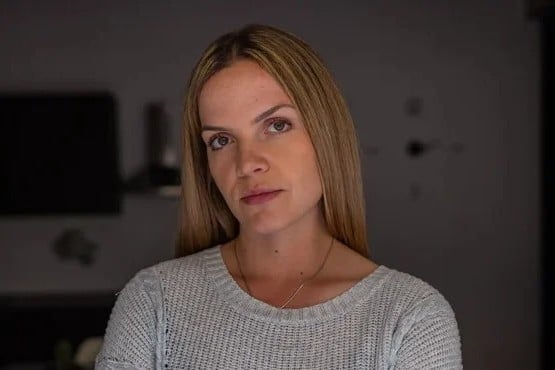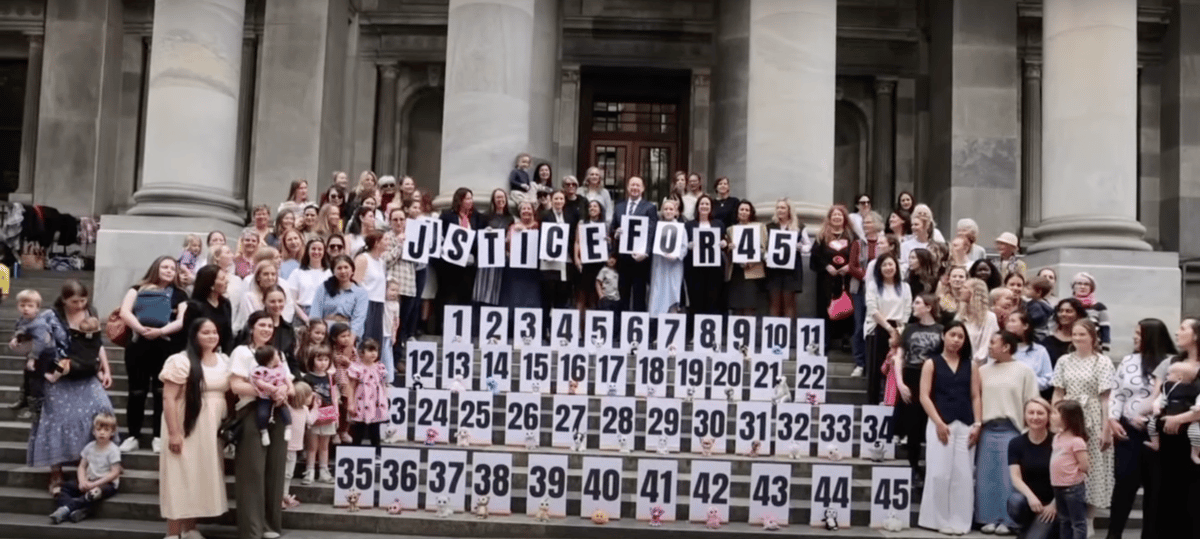
This story deals with pregnancy loss.
'Justice for the 45' reads the sign being held up by what looked like a hundred people standing on the steps of South Australia's Parliament House. The sign was accompanied by 45 teddy bears in different colours laid out across the steps, like tiny plush victims of a soft toy massacre.
 MP Ben Hood with people standing on the steps of South Australia's Parliament House holding the 'Justice for 45' sign. Image: 7News.
MP Ben Hood with people standing on the steps of South Australia's Parliament House holding the 'Justice for 45' sign. Image: 7News.




























































































